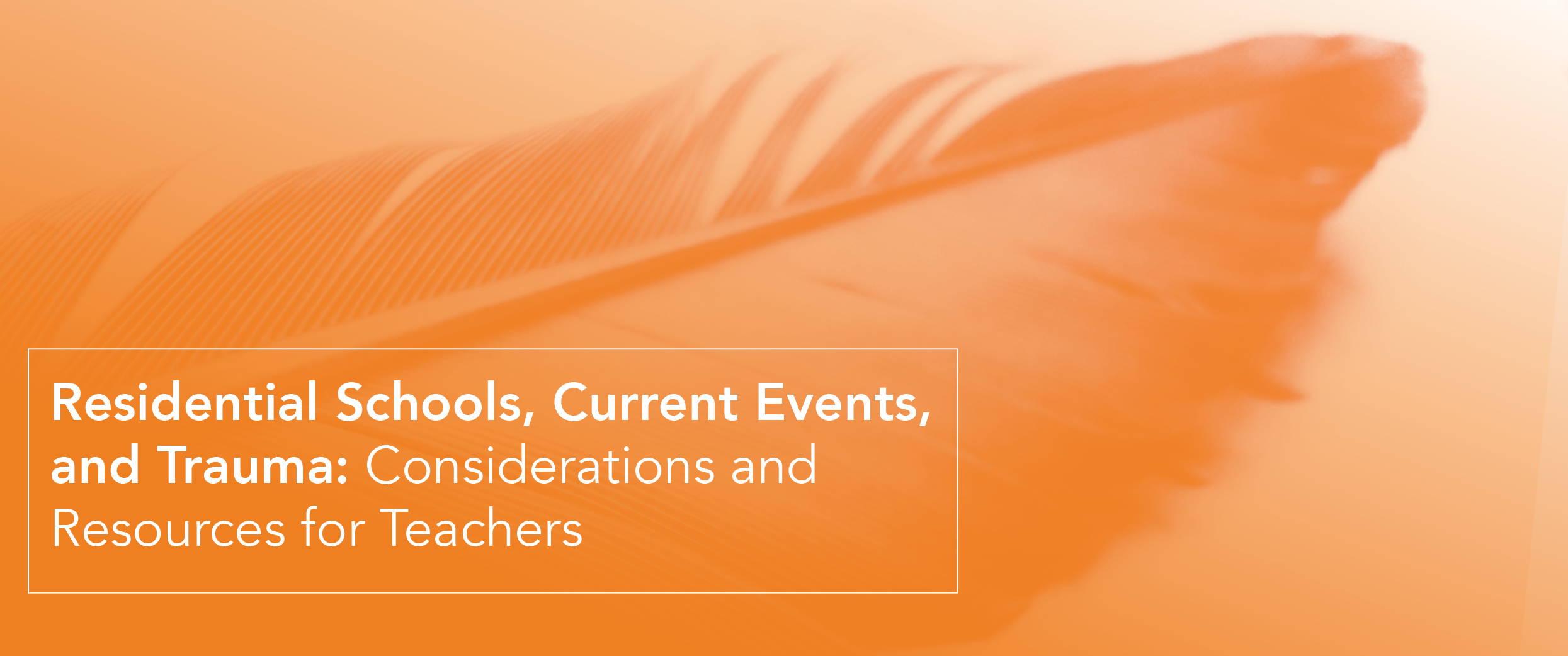
Please note: This post contains details about the May 2021 discovery at the former Kamloops Indian Residential School, and may be disturbing to some readers.
Last week’s announcement by Tk'emlúps te Secwépemc First Nation of the discovery of the remains of 215 children buried at the former Kamloops Indian Residential School in British Columbia is horrifying, and difficult to process. As educators, our grief runs alongside a need to understand how to knowledgeably unpack this news with our students. With this in mind, here are a few suggestions, as well as links to some resources.
Be mindful when reaching out to Indigenous partners
Although it’s important to provide authentic representation in what we share with students in this moment, we must also ensure that we don’t overwhelm Indigenous partners and colleagues with requests for their time and energy. They, like many others, are processing the weight of this news, and carrying individual, familial, and community pain and trauma. By all means reach out with words of caring and empathy, but remember that it is not their responsibility to provide support to non-Indigenous people or groups — though many may feel the responsibility or desire to help inform and advocate for truth.
In the meantime, we need to consider how resources like the examples provided below can be used in the immediate aftermath to ensure that we are providing fulsome opportunities to students, while providing space to those who need it.
Apply a trauma-informed approach to your conversations
It is impossible to know how directly this discovery impacts our students. It is important to recognize that, due to the impacts of these schools, many Indigenous students choose not to identify and may not necessarily be recognized by their appearance, but could be hurting very deeply. Bringing a trauma-informed approach into our classrooms is a vital step in providing the scaffolding and support our students need.
Engage in critical thinking
This is a developing story, and new information as well as actions and reactions will continue to come to light. Students will understandably process this information in different ways, but as teachers, it is important to help students apply a critical thinking lens to the information they uncover. This means considering the source of news, the historical context behind reactions, and the connections between the different forms of racism and hatred that permeate our culture and systems.
RESOURCES
Though by no means an exhaustive list, the resources below may be helpful to educators and students seeking a deeper understanding of the residential school system and its deep and lasting impacts on Indigenous communities, families and individuals. (Note: The descriptions provided for each link are quoted directly from the resource itself.)
“The Legacy of Hope Foundation (LHF) is a national, Indigenous-led charitable organization that has existed for 20 years. The LHF’s goal is to educate and raise awareness about the history and long-lasting intergenerational impacts of the Residential School System, Sixties Scoop, Day School and other means of cultural oppression against Indigenous (First Nations, Métis, and Inuit) Survivors, their descendants, and their communities.”
“Project of Heart is an inquiry based, hands-on, collaborative, intergenerational, artistic journey of seeking truth about the history of Aboriginal people in Canada. Its purpose is to: examine the history and legacy of Indian Residential Schools in Canada and to seek the truth about that history, leading to the acknowledgement of the extent of loss to former students, their families and communities; commemorate the lives of the thousands of Indigenous children who died as a result of the residential school experience; and call Canadians to action, through social justice endeavors, to change our present and future history collectively.”
“Orange Shirt Day is a legacy of the St. Joseph Mission Residential School (1891-1981) Commemoration Project and Reunion events that took place in Williams Lake, BC, Canada, in May 2013. This project was the vision of Esketemc (Alkali Lake) Chief Fred Robbins, who is a former student himself. It brought together former students and their families from the Secwepemc, Tsilhqot’in, Southern Dakelh and St’at’imc Nations along with the Cariboo Regional District, the Mayors and municipalities, School Districts and civic organizations in the Cariboo Region. The events were designed to commemorate the residential school experience, to witness and honour the healing journey of the survivors and their families, and to commit to the ongoing process of reconciliation. Chief Justice Murray Sinclair challenged all of the participants to keep the reconciliation process alive, as a result of the realization that every former student had similar stories.”
“The digital resource Walking Together: First Nations, Métis and Inuit Perspectives in Curriculum was designed to help teachers understand the holistic nature of First Nations, Métis and Inuit ways of knowing; to provide opportunity for Inuit, First Nations and Métis peoples to share their perspectives on topics important to them; and to demonstrate First Nations, Métis and Inuit perspectives in teaching and learning experiences.”
